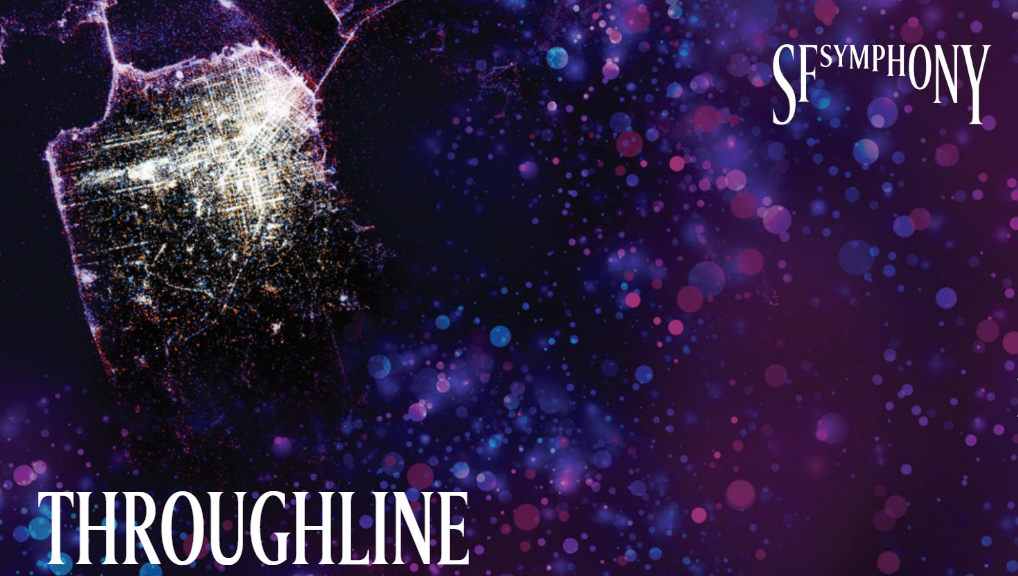
Vibrant Symphony in Technology, Diversity
The new reality in classical music is virtual, with a totally new genre of concert: close-knit ensembles playing, even though they might never meet each other.
The San Francisco Symphony tackled the mid-pandemic problem Nov. 14 with an elaborate, costly, hi-tech solution to bring forth an hour-long prerecorded program crackling with energy, talent, modernity and diversity, filmed in part “around the world,” per drum-beating press release. Featured with the classical players were contrasting figures rarely in the concert hall, like rap artists and a barefoot jazz singer also playing contrabass—double duty. And an array entirely of living composers, including one world premiere.
In effect, this concert forced musicians onto another planet, well out of their comfort zone. If it was challenging, it was just the beginning during this seemingly endless pandemic: Either separate the musicians, or else have no ensemble music at all. Versatility and adaptability are the new keynotes in symphonic play.
At the helm of the heterogeneous ensembles was Esa-Pekka Salonen in his debut as SFS music director, leading this belated season opener. If all those empty seats in Davies Hall could get up, he’d have gotten a standing ovation. Ah, yes—The new reality means virtual audiences.
Never letting ego absorb the spotlight, Salonen largely deflects honors to his eight Collaborative Partners—guest musicians making artistic decisions too—and to the smattering of SFS players featured. With discreet social distancing and maskingde rigeurfor one and all. Close performer teamwork, despite wide separation.
The sophisticated video-shoot technique readily combined a half-dozen instrumentalists in a single mosaic-like image, coming from equally many remote locations in close coordination, with all wearing earphones to catch the unifying beat—solos, duets, sometimes close to a dozen together. While nothing can replace a full hall with live audience, the new mode spares us nearby patrons with jingling bracelets or big hair, along with that clod who forgets to turn off his smartphone ringer.
What does it all mean? For starters, Salonen has even more contemporary tastes than predecessor MTT, which may or may not sit well with the rank-and-file patrons. In leading and programming the SFS, he will apparently use his musician-collaborators—a highly innovative concept—to submit and bounce off ideas, as well as to scout out emerging new talents. And for the SFS musicians, any music-making in the coming months will likely be with both separation and use of earphones.
Modern tech pulled in musicians from afar who stayed put: The highly regarded young soprano Julia Bullock in Munich, Germany; violinist Pekka Kuusisto in Finland; bassist-singer Esperanza Spalding in Oregon; and bass flutist Claire Chase in New York City. All told, three states and four countries.
The highlight was “Throughline,” a 20-minute world premiere for selected SFS instrumentalists by Nico Muhly, with himself playing an animated piano. The visuals were extraordinary in the tight, fast-shifting images. They were altogether too stunning for their own good, drawing attention away from the audio, which provided a harmonious interplay. You felt as if you were almost inside the instruments, which is not the optimum tune-in point.
The creative process was a dual creativity between Muhly and Artificial Intelligence adapting its input to Muhly’s compositional style. I foresee future works along the lines of “AI and Me,” with composers like Ludwig van B. Robot and A.I. Astute! In partnership with electronic creativity, at what point is the human no longer the creative entity?
Memorable images in this musical kaleidoscope included the ear-tingling delicate percussion sounds of Ellen Reid’s “Fear/Release,” where for once drawn bows setting vibraphone blocks vibrating became far more effective than in the concert hall.
Heightening the heterogeneity were the rap singing in Kev Choice’s “Movements,” in part filmed on a busy city street, and the subtle unaccompanied song-cum-contrabass solo by Esmeralda Spalding, playing barefoot in total tranquility.
And Music Director Esa-Pekka Salonen, who was the coordinating engineer, was seen not so much leading on a podium as trekking through the wilds pensively.
There never was a symphony opener like this one, ever, and it’s well worth tuning in on subsequently, since this effort was far too elaborate technologically to encourage these far-ranging concepts on a weekly basis to piece together a near-lost symphony season, washed out for the most part by the Coronavirus.
“Throughline” concert, presented by the San Francisco Symphony, to be rebroadcast on NBC Bay Area (TV) Nov. 30, 7 pm. Also to be streaming continuously on sfsymphony.org. More intimate concert sets will follow weekly.